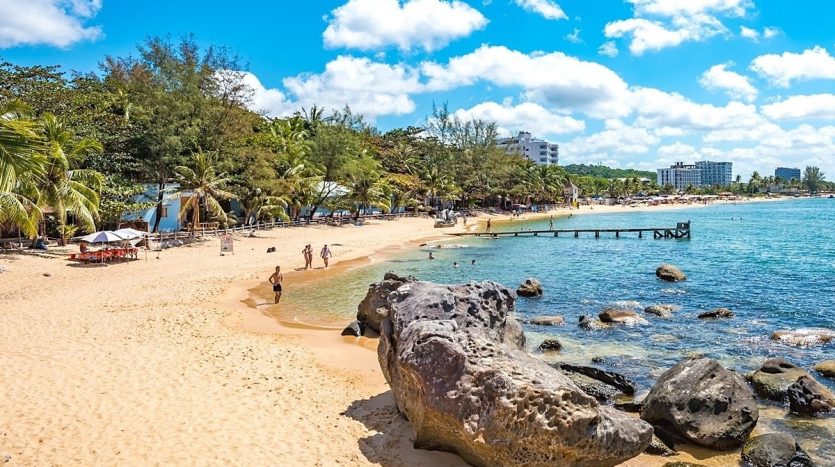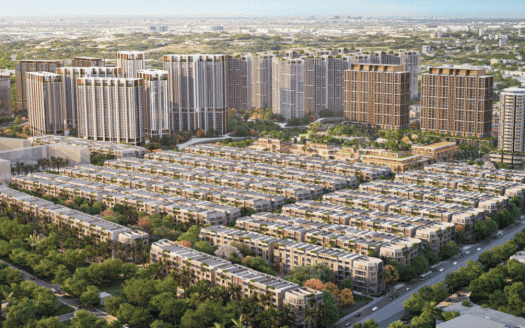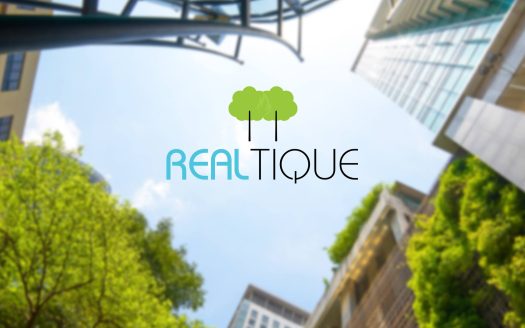Vietnam’s Top Property News – Week 26/2021
The top residential and commercial real estate news of the Week 26/2021 and property recommendations:
Information herein has been obtained from sources believed reliable, please analyze and use it at your own responsibility and independently confirm its accuracy and completeness.
NEW – Thao Dien Green (District 2, HCMC)
- Developer: SIC Real Estate Investment Joint Stock Company
- Location: Nguyen Van Huong Street, Thao Dien Ward, District 2, Ho Chi Minh City
- Unit types: 1-Bedroom: 54.99 sqm & 61.36 sqm, 2-Bedroom: 83.51 sqm – 88.8 sqm, 3-Bedroom: 108.84 sqm – 130.39 sqm, Penthouse: 323.29 sqm – 400.71 sqm (Duplex)
- Expected Completion: IV/2023
- NOW receiving booking
NEW – Celesta Heights (Nha Be District, HCMC)
- Developer: Keppel Land and Phu Long
- Location: Nguyen Huu Tho, Nha Be, Ho Chi Minh City
- Unit types: 1-Bedroom: 50m2, 2-Bedroom: 82-88m2, 3-Bedroom: 117m2
- Price from 2,500USD/m2
- NOW receiving booking
Vietnam outlook upped by 3 credit rating agencies

The economic outlook of Vietnam is positive on impressive economic achievements and continuous reform in policy making amid the Covid-19 pandemic. Vietnam News Agency/Vietnam News
The S&P Global Ratings announced late last week it had retained Vietnam’s sovereign credit rating and improved its economic outlook to “positive” from “stable”.
This made Vietnam the only country in the world to have its outlook improved this year by three credit rating agencies, Moody’s, S&P and Fitch, according to the Ministry of Finance.
The S&P made the decision on the back of Vietnam’s impressive economic achievements and reforms of policymaking amid the Covid-19 pandemic.
The agency said Vietnam, after recording one of the highest economic growth rates worldwide in 2020, would continue with solid recovery in the next one to two years thanks to the government’s effective measures against the pandemic, efforts to attract foreign investment, stable exports, strong domestic demand and solid external position.
Vietnam’s fiscal policies and public debts showed efficiency and flexibility, which contributed significantly to controlling the pandemic, the agency said.
Moody’s Investors Service in mid-March raised its outlook for Vietnam to “positive” from “negative” and affirmed the country’s long-term credit rating at Ba3. The drivers of the positive outlook included signs of improvements in fiscal strength and potential improvements in economic strength that might strengthen Vietnam’s credit profile over time.
Fitch Ratings early last month revised Vietnam’s outlook to “positive” from “stable” and affirmed the long-term foreign-currency issuer default rating at ‘BB’, given the country’s success in bringing the coronavirus outbreak swiftly under control alongside strong policy support and export demand.
The Covid-19 pandemic has caused social instabilities and economic slowdown in many countries in the world.
Last year, credit rating agencies lowered sovereign credit rating 124 times and economic outlook 133 times globally.
From the beginning of this year to May 21, 16 countries had their outlooks lowered by Moody’s, S&P and Fitch.
The finance ministry said that the Vietnamese government would continue pursuing the goal of consolidating the macro-economic foundation, maintaining stable growth in production and trade, improving the internal capacity of the economy, boosting institutional reform in combination with fighting the pandemic, contributing to realizing the country’s mid and long-term goals and improving national stature.
In the near future, the ministry and the government agencies will continue enhancing collaboration and information sharing with credit rating agencies and international organizations to fuel socio-economic development and improve Vietnam’s creditworthiness, the ministry said.
The Asian Development Bank in its Asian Development Outlook 2021 launched late last month forecast the Vietnamese economy would grow at 6.7 per cent this year, despite the return of the virus, and at seven per cent in 2022.
The World Bank in mid-May however warned about several risks to the Vietnamese economy due to the fourth outbreak of the virus in Vietnam starting from late last month. With new restrictive measures in place, the outbreak would affect domestic economic activities, especially tourism, transportation and retail.
The World Bank recommended the Vietnamese government consider stimulating domestic demand through the application of more adaptive fiscal policies, including a larger-scale support package for people and businesses affected by the pandemic.
Although 2020 was considered a hard year for the global economy due to the impacts of the pandemic, the Vietnamese economy managed to expand at 2.91 per cent while many countries saw considerable recessions.
The Vietnamese economy reached a scale of $343 billion last year, making the country the fourth-largest economy in the Southeast Asia region, coming after Indonesia ($1.088 trillion), Thailand ($509 billion) and the Philippines ($367 billion).
The government set the target for gross domestic product (GDP) growth at 6.5 per cent this year, higher than the National Assembly’s plan at six per cent.
Source: Vietnam News/Asia News Network
HCMC to keep coronavirus restrictions after social distancing

Soldiers and medical workers disinfect the Binh Dien market in HCMC as a Covid-19 prevention measure, June 27, 2021. Photo by VnExpress/Huu Khoa
HCMC will persist with certain restrictions even after the current social distancing period ends Tuesday, the municipal People’s Committee said Monday.
Duong Anh Duc, deputy chairman of the municipal People’s Committee, said the city would continue to impose social distancing measures as dictated by Directive 10, even after the social distancing period under Directive 15 ends at 0 a.m. Tuesday.
“There is no end date for the social distancing period as dictated by Directive 10, so the city will continue to apply it to tighten coronavirus prevention measures,” he said. Directive 10, which went into effect June 20, requires the suspension of non-essential businesses and spontaneous markets, prohibition of gatherings of more than three in public spaces and maintaining of at least 1.5 meters distance between people in public.
Meanwhile, Directive 15, which has been applied starting May 31, requires suspension of social events, bans gatherings of 20 people or more in one place and of 10 people or more outside workplaces, schools and hospitals. A minimum distance of two meters has to be ensured between people in public places.
As of Monday night, the southern metropolis had recorded 3,436 local Covid-19 cases in the fourth coronavirus wave that hit Vietnam late April. Its infection count is second only to Bac Giang, which has 5,663 cases in the fourth wave.
The Covid-19 situation in the city is still considered “complicated,” with the emergence of several community transmission cases that have no obvious infection sources, authorities said.
Over the past week, over 710,000 people in the city have been vaccinated against Covid-19 in the biggest vaccination campaign in the city’s history.
Source: VnExpress
Vaccine passport program readied for foreigners to visit Phu Quoc Island

Foreign tourists on Truong Beach of Phu Quoc Island. Photo by Shutterstock/DreamArchitect
The tourism ministry is urgently working on a plan for welcoming international tourists with the so-called Covid-19 vaccine passports to Phu Quoc Island in Kien Giang Province.
Nguyen Van Hung, the Minister of Culture, Sports and Tourism, said Thursday that any plan to receive tourists must abide by coronavirus prevention measures.
Previously, on Tuesday, the tourism ministry and Kien Giang authorities had been requested to prepare a plan to receive foreigners to Phu Quoc and submit it to Prime Minister Pham Minh Chinh next month.
The health ministry would cooperate with other relevant entities to trial the use of vaccine passports allowing foreigners to travel to certain tourism destinations that have managed the novel coronavirus pandemic well, it was announced.
The National Steering Committee for Covid-19 Prevention and Control had already decided in April that three groups of entrants: vaccinated Vietnamese citizens stranded overseas; foreigners wishing to enter Vietnam for investment and business purposes; and international tourists would be eligible to use vaccine passports.
The vaccine passport is currently envisaged as a digital document issued by the country where the vaccine has been administered.
Vietnam plans to receive people coming from countries that have managed Covid-19 outbreaks well, including those that have achieved herd immunity thanks to their vaccination programs. Such people will be able to visit tourist sites and resorts designated for their ability to control the flow of tourist traffic well and be able to manage guests’ itineraries efficiently and safely.
Last week, Kien Giang authorities had announced plans to vaccinate the island’s population against Covid-19 so that it can reopen its doors to foreigners.
Phu Quoc, Vietnam’s largest island, has become a top tourist destination after the government rolled out a 30-day visa-free policy for foreigners in 2014.
In 2019, the last year before the onset of the pandemic, it received over five million visitors, including 541,600 foreigners.
Source: VnExpress
H1 GDP growth pegged at 5.64 pct

Employees work at a smartphone factory in Hai Phong City, northern Vietnam. Photo by VnExpress/Tuan Hung
Vietnam’s GDP grew at 5.64 percent in the first half of 2021, according to the General Statistics Office. Second quarter growth was 6.61 percent, the GSO said Tuesday.
The manufacturing and construction sector grew by nearly 9 percent in the first six months, and accounted for 59 percent of the GDP.
Agriculture, aquaculture and forestry growth was 3.8 percent, and the services sector expanded at nearly 4 percent.
Manufacturing grew at 11.4 percent, but mining experienced a 6.6 percent decline due to a drop in crude oil and natural gas production.
In the services sector, transportation and restaurants were hit by the social distancing imposed in several areas to contain the Covid-19 pandemic. The transport and warehousing segment shrank by 0.39 percent, while accommodation and food services contracted by over 5 percent.
GDP growth last year was 2.91 percent last year, the lowest in a decade, but Vietnam was one of the few countries in the world to achieve positive growth.
Experts are confounded, but officials are not very surprised that Vietnam managed to record a high GDP growth in the first six months.
The say the two main factors in this growth surge are: the low base level last year and an impressive recovery in manufacturing.
The first half growth rate was 5.64 percent, three times that of the same period last year, even though the country had to go through two major Covid-19 waves.
Experts said the growth was surprising because the two localities with the highest infections were major industrial hubs: the northern province of Bac Giang and Ho Chi Minh City. Both localities had to shut down many factories to contain the spread of the novel coronavirus.
Also, businesses were suffering with the number of firms withdrawing from the market rising nearly 25 percent to over 70,000.
“The 5.64 percent growth rate is pretty high and unexpected,” said Le Duy Binh, CEO of consultancy company Economica Vietnam.

Vietnam’s H1 GDP Growth. GSO
But authorities said there was nothing unusual about the growth rate.
Le Trung Hieu, head of the National Account System under the General Statistics Office (GSO), said that the rate was high because last year’s level, when Covid-19 first hit Vietnam, was very low.
Last year’s H1 growth was 1.82 percent, lowest in nation’s history.
Another reason for the high rate is the recovery of the manufacturing and processing sector, Hieu said.
Pham Dinh Thuy, head of industrial statistics division under the GSO, said that industrial growth in the first six month grew 9.3 percent year-on-year, only 0.1 percentage point lower than the first half of 2019, when there was no Covid-19 impact.
Even Bac Giang, the worst-hit Covid-19 locality, recorded a growth rate of 9 percent, even though without the pandemic, the figure could have been as high as 30-40 percent.
Without the fourth Covid-19 wave industrial growth could even have reached 11-12 percent, Hieu said.
Some experts said that the growth rate was also supported by growth in exports, services, retail and agriculture.
However, the rate was still lower than a prior forecast of 5.8 percent by the Ministry of Planning and Investment, while economists surveyed by Bloomberg had expected a growth of 7.2 percent in the second quarter alone.
To complete the goal of 6 percent growth this year, the country needs a 6.3 percent growth in the second half, Hieu said.
“This is a challenging target and it depends on how the Covid-19 pandemic progresses, but Vietnam can make it happen.”
However there were other factors of concern, experts said.
Binh said that the rising prices of materials, if not managed well, could bring inflationary risks this year and the next.
Other concerns are that Vietnam has recorded a trade deficit for two months this year and another one could be coming, and that the unemployment rate has been rising.
The country should focus on keeping its macro economy stable and on achieving sustainable growth instead of pursuing GDP targets at all costs, Binh said.
Singaporean lender United Overseas Bank (UOB) forecast Vietnam’s GDP would grow by 6.7 percent this year.
It said Vietnam’s economic growth trajectory remained on track, with exports in the first five months growing 35.5 percent year-on-year, while imports rose 54 percent.
Foreign direct investment (FDI) inflows remain upbeat so far in 2021, a reflection of investor confidence and Vietnam’s relevance in the global supply chain. Registered capital FDI this year as of May hit $14 billion, rising marginally by 1 percent from last year.
However, the fourth outbreak of Covid-19 that started on April 27 has resulted in movement restrictions and lockdowns that disrupted a range of business and manufacturing operations, it said in a Friday report.
UOB said the recent outbreaks of Covid-19 and discovery of new virus variants certainly pose a downside risk to the economy, as vaccination rates have been low relative to neighboring countries.
One factor to watch, according to UOB, is Vietnam’s inflation rate, which has risen to 2.9% year-on-year in May. Inflation rates in May increased by 0.16 percentage points compared to April, the highest growth rate since September 2020, driven by the growth in transportation and housing prices.
The government has a growth target of 6.5 percent this year.
Source: VnExpress
Set up Property Investment Plan with Budget Suitable Options and Decent Capital Yield?
Email Support (24H): We know you will have a lot questions. Send us an email and we will get back to you within 1 working day.
Realtique Co., LTD
+84903186378 (Whatsapp/Viber/Zalo/Wechat)







